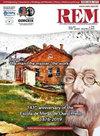超声技术评估巴西圣保罗市拉莫斯·德·阿泽维多纪念碑的物理状况
Q3 Earth and Planetary Sciences
引用次数: 6
摘要
本文通过超声波脉冲速度的研究,对拉莫斯·德·阿泽维多纪念碑的保护进行了评价。拉莫斯·德·阿泽维多纪念碑对圣保罗(巴西)的历史具有重要意义,因为它是为了纪念在城市建筑和社会发展中发挥重要作用的建筑师。这座纪念碑是用Itaquera花岗岩建造的,这种石头广泛用于城市的文化遗产,更具体地说,它被称为黑云母二长花岗岩。使用的设备是V-Meter Mark III,只有P波与54 kHz换能器一起使用。在纪念碑和新石头上进行了几次测量,并将结果进行了比较。结果表明,即使更换了两次位置,石头的状况也很好,因为这些值与新鲜样品的值非常接近。低值归因于内部不连续或黑云母包体,后者在伊塔格拉花岗岩中非常常见。本文章由计算机程序翻译,如有差异,请以英文原文为准。
Ultrasound technique to assess the physical conditions of the Monument to Ramos de Azevedo, city of São Paulo, Brazil
This paper presents the evaluation of the conservation of the Monument to Ramos de Azevedo through a study of the ultrasound pulse velocity. The Monument to Ramos de Azevedo is of great importance for the history of the city of Sao Paulo (Brazil), because it honors the architect who was fundamental in the architectural and social development of the city. This monument was built with Itaquera Granite, a stone widely used in the cultural heritage of the city, which is more specifically called biotite monzogranite. The equipment used was the V-Meter Mark III and only P waves were used with 54 kHz transducers. Several measurements were taken on the monument and on fresh stone, and the results were compared. Results showed that the stone is in good condition even after changing locations twice because the values are very close to those of the fresh sample. The low values were attributed to internal discontinuities or biotite enclaves, the latter being very common in the Itaquera Granite.
求助全文
通过发布文献求助,成功后即可免费获取论文全文。
去求助
来源期刊

Rem-Revista Escola De Minas
工程技术-工程:土木
自引率
0.00%
发文量
0
审稿时长
6-12 weeks
期刊介绍:
REM – International Engineering Journal (antigua REM – Revista Escola de Minas) es la primera revista técnica de Sudamérica. Fue fundada en enero de 1936 por los estudiantes de la Escuela de Minas de Ouro Preto y desde entonces se ha especializado en la publicación de artículos en las áreas de la Ingeniería Civil, Geología, Metalurgia y Materiales y, Minería y Mecánica y Energía.
Su objetivo es servir como un medio de publicación para los trabajos técnicos y científicos originales de investigadores nacionales y extranjeros en esas áreas. Contribuciones originales (artículos y cartas) son aceptadas. Artículos de revisión dependen de la invitación y/o análisis de los Editores.
El envío de artículos para su publicación implica que el trabajo no ha sido publicado previamente, que no está siendo presentado para su publicación en otra revista y no se publicará en otro lugar, en la misma forma, sin el permiso, por escrito, de los Editores/Autores.
 求助内容:
求助内容: 应助结果提醒方式:
应助结果提醒方式:


